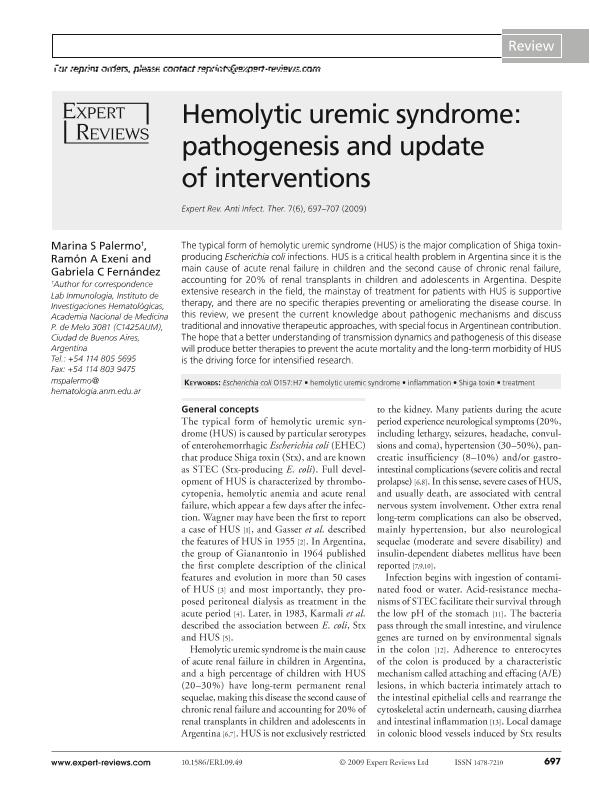Artículo
Hemolytic uremic syndrome: pathogenesis and update of interventions
Fecha de publicación:
12/2009
Editorial:
Future Drugs Ltd.
Revista:
Expert review of anti-infective therapy
ISSN:
1478-7210
e-ISSN:
1744-8336
Idioma:
Inglés
Tipo de recurso:
Artículo publicado
Clasificación temática:
Resumen
The typical form of hemolytic uremic syndrome (HUS) is the major complication of Shiga toxin-producing Escherichia coli infections. HUS is a critical health problem in Argentina since it is the main cause of acute renal failure in children and the second cause of chronic renal failure, accounting for 20% of renal transplants in children and adolescents in Argentina. Despite extensive research in the field, the mainstay of treatment for patients with HUS is supportive therapy, and there are no specific therapies preventing or ameliorating the disease course. In this review, we present the current knowledge about pathogenic mechanisms and discuss traditional and innovative therapeutic approaches, with special focus in Argentinean contribution. The hope that a better understanding of transmission dynamics and pathogenesis of this disease will produce better therapies to prevent the acute mortality and the long-term morbidity of HUS is the driving force for intensified research.
Archivos asociados
Licencia
Identificadores
Colecciones
Articulos(IMEX)
Articulos de INST.DE MEDICINA EXPERIMENTAL
Articulos de INST.DE MEDICINA EXPERIMENTAL
Citación
Palermo, Marina Sandra; Exeni, Ramón Alfonso; Fernández, Gabriela Cristina; Hemolytic uremic syndrome: pathogenesis and update of interventions; Future Drugs Ltd.; Expert review of anti-infective therapy; 7; 6; 12-2009; 697-707
Compartir
Altmétricas




